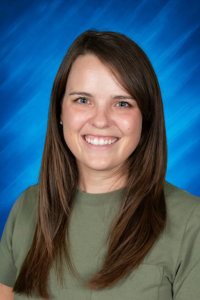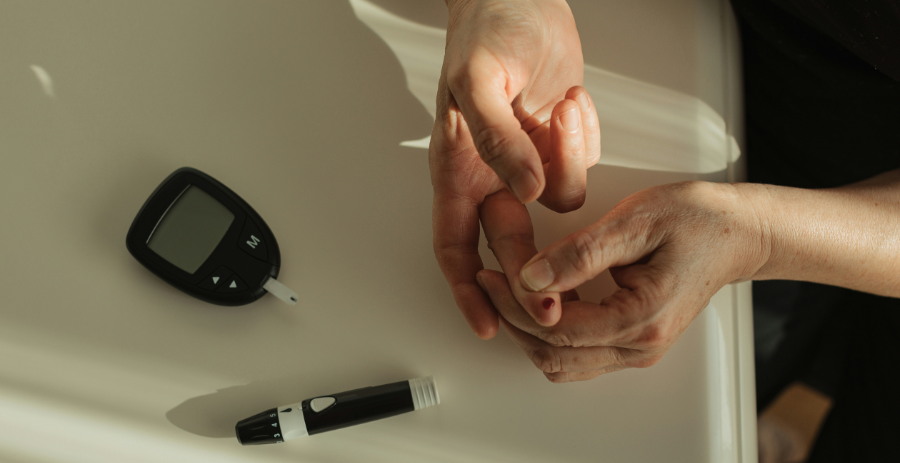The most amazing part of being a teacher is witnessing the look on a child’s face when they understand something they thought was too challenging for them. As educators, we see children acquire skills and develop their independence as learners every day. Every child walks into the classroom with their challenges or struggles. Teachers are tasked with the responsibility to help students navigate these struggles and overcome them to the best of their abilities as they evolve on their educational journeys. There are, however, times when the challenge is learning to live with the permanence of the situation.

Students with diabetes face a slew of permanent challenges, both seen and unseen. In addition to the everyday tasks required by all students, children with diabetes require continuous monitoring for spikes and drops in glucose levels. They must be hyper-aware of every calorie they intake, their movement levels, and the amount of water they consume. At the elementary level, the school nurse and the teacher become partners in their health care by assisting these students and being constantly vigilant for signs of blood sugar changes. However, the responsibilities of these caretakers change based on the existence of a continuous glucose monitor (CGM), specifically a device with app tracking.

As teachers, we have had students with and without these life-saving devices. Our students who did not have them were constantly pulled from their studies to have their blood sugar levels checked, adjusted, and rechecked. The children would miss instruction, activities, and assessments, leaving them constantly behind and trying desperately to keep up with their peers. Imagine missing out on the “fun stuff,” like science experiments and review games, all because you were in the nurse’s office receiving a “finger stick” or checking your blood sugar. These children risk falling behind academically and lose the opportunity to have “normal” childhood experiences. They miss out on their social experiences, as well, and may even have to spend portions of their lunch or recess time with the nurse for monitoring. We can still picture these children’s disappointed faces when we inform them, they must visit the nurse … again.
Students who have access to CGMs with tracking apps, while still experiencing challenges beyond the scope of their peers, take advantage of far more learning experiences in the classroom. These children can be present in their least restrictive learning environments while the adults (and sometimes the children) monitor their glucose levels through applications on their cellular phones. The children leave the classroom less often because the device sends readings and notifications directly to the nurse, parents, and teachers. The school nurse can come quietly into the classroom, take care of the student’s needs, and leave without interrupting the learning process. This efficient and highly effective method of caring for a child with diabetes eliminates a lot of anxiety for the parents and teachers because of the assurance that we will receive a notification if there is a problem. We do not have to wait for the scary signs of low or high blood sugar to appear. Likewise, students with CGMs connected to an app do not have to be singled out or miss out on activities and time with their peers as often as students without CGMs or CGMs without the app function.
Unfortunately, students who receive health care through the Arizona Health Care Cost Containment System, or AHCCCS, do not always have coverage for CGMs with app monitoring. Often, the regulatory language is difficult to understand, and the criteria for getting the CGM are unclear, restricting some families from utilizing it. As teachers, we must watch these children miss out unnecessarily due to restrictions and red tape. Children with diabetes who are also on AHCCCS may be struggling every single day with various other adversities. Failing to provide them with this device, which their doctor may have recommended, exacerbates the issues. This can lead to chronic absenteeism, missed learning, and raised anxiety levels for all parties involved.
Gov. Katie Hobbs recently signed into law HB2174, allowing schools and teachers to strengthen support for the health and safety of more than half a million students diagnosed with diabetes. November is National Diabetes Awareness Month, to truly support school children with diabetes the next logical step would be to make a minor regulatory adjustment allowing all students to use a known technology, such as the CGM with app tracking. Such a change would continue prioritizing student health and safety.
Emily Houston, Ed.D. is an elementary school teacher with ten years of classroom experience, including Title 1 schools. Nicole Kaiser, M.Ed. is an elementary school teacher with nine years of classroom experience. Both teachers have taught students with and without CGM’s.
(Except for the headline, this story has not been edited by PostX News and is published from a syndicated feed.)

